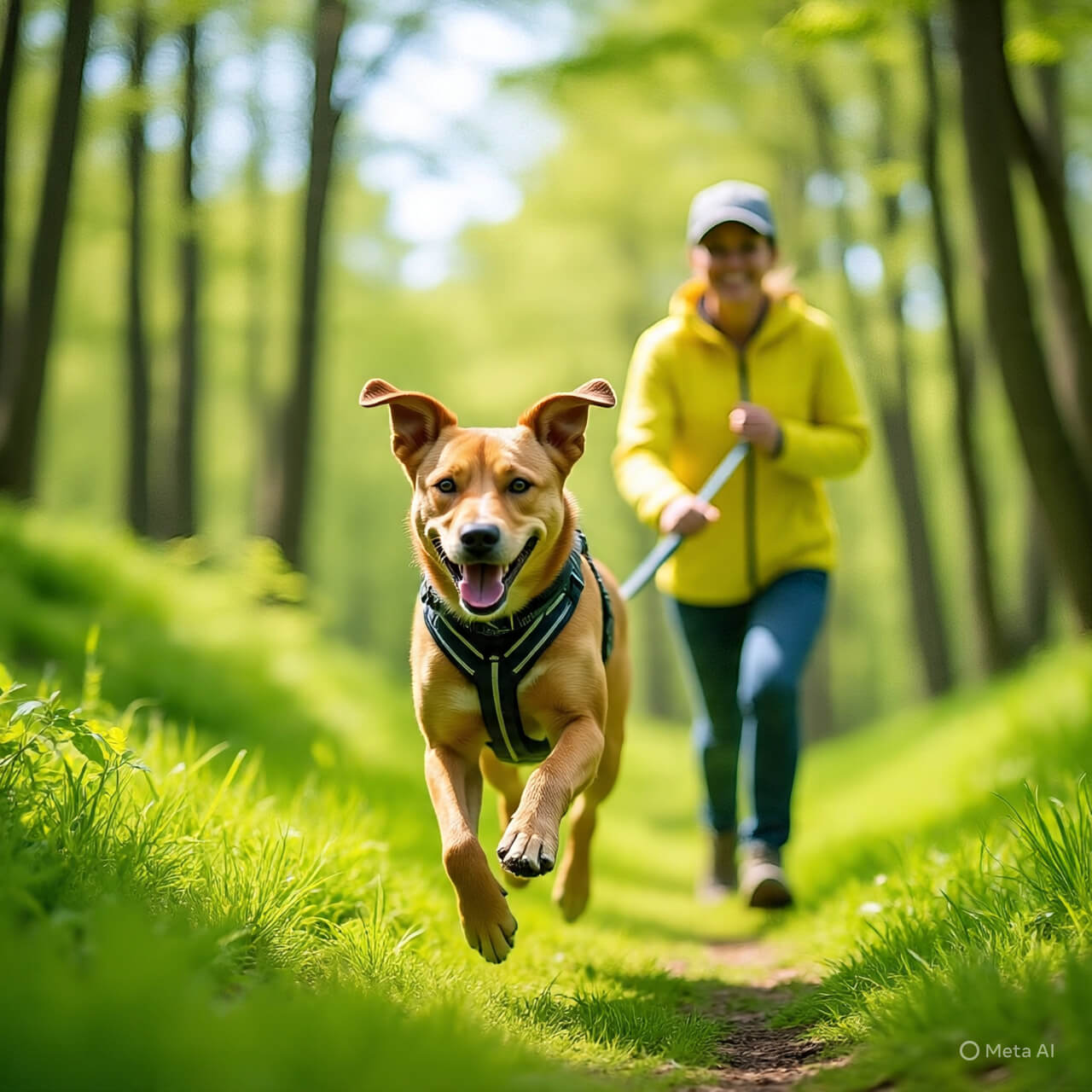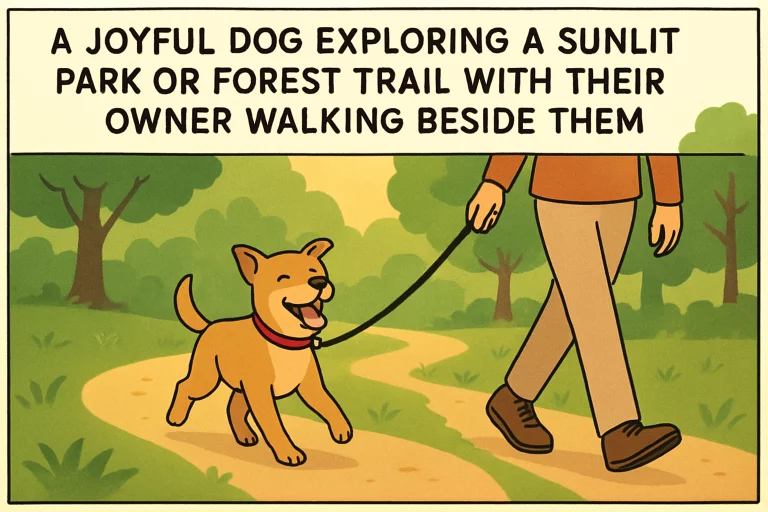Adventures for Pets: The Benefits of Outdoor Activities for Dogs

Key Takeaways
- Regular outdoor activities improve dogs’ physical health and mental well-being.
- Outdoor adventures provide essential mental stimulation and socialization opportunities.
- Engaging in outdoor activities strengthens the bond between dogs and their owners.
Table of Contents
- Physical Health Benefits
- Mental Stimulation and Enrichment
- Socialization Opportunities
- Strengthening the Human-Dog Bond
- Safety Tips for Outdoor Adventures
Outdoor adventures provide more than just fresh air for your canine companion—they’re vital for your dog’s overall health, happiness, and behavioral growth. The world outside your front door offers countless opportunities for exploration and enrichment, from city parks bustling with life to tranquil forest trails brimming with exciting scents. Allowing your dog to explore these diverse environments creates lasting positive impacts on their well-being. Enlisting reliable dog walking services is an excellent solution for busy pet parents who want to ensure their furry friends reap these rewards even on hectic days. These professionals can give your dog the physical activity and mental stimulation they need, while giving you peace of mind that your pup’s needs are always met. Not only do outdoor activities keep dogs physically agile and healthy, but they also provide meaningful opportunities to strengthen your unique bond with your pet. Exploring together, whether investigating new scents on a trail or simply tossing a favorite stick in the park, is one of the best ways to foster trust and understanding. These shared experiences can lead to joyful memories and a deep, mutual connection that goes far beyond the daily routine, enriching the lives of both pets and their owners in countless ways.
Physical Health Benefits
Like their human companions, dogs rely on regular exercise to stay healthy and vibrant throughout their lives. Outdoor activities such as hiking through scenic trails, running along the shoreline, swimming in safe lakes, or simply engaging in a spirited game of fetch in the backyard provide essential outlets for pent-up energy. Routine exercise is crucial for helping dogs achieve and maintain a healthy weight, reducing their risk of developing obesity and related health issues like heart disease, diabetes, and joint dysfunction. Active dogs are less prone to conditions such as arthritis, as exercise keeps their muscles strong, supports healthy joints, and boosts overall cardiovascular fitness. Even short, consistent daily walks contribute by increasing stamina, aiding digestion, promoting restful sleep, and enhancing flexibility, which is particularly beneficial for older dogs seeking to stay agile as they age. Making outdoor activity a part of your dog’s daily or weekly schedule significantly enhances their quality and length of life.
Mental Stimulation and Enrichment
Outdoor adventures offer an array of crucial mental challenges and sensory experiences that keep your dog’s mind sharp. Each walk outside is filled with new sights, sounds, and especially smells—an essential form of enrichment for any canine. Traversing a leafy forest, navigating the many distractions of a city sidewalk, and watching wildlife all present the kind of real-life learning that can’t be replicated at home. These outings engage instincts, encourage problem-solving through scent tracking and exploration, and combat boredom, a common cause of destructive behaviors in the home. Moreover, switching up routes or introducing agility obstacles and games stimulates your dog’s mental faculties, preventing monotony and helping them remain alert, curious, and content. When dogs regularly face new environments and stimuli, their adaptability and resilience flourish, making them more comfortable and less anxious in unfamiliar situations. Experts note that when varied or paired with simple brain games, everyday activities can transform routine walks into enriching adventures for your pet.

Socialization Opportunities
Exposure to different environments, people, and animals during outdoor outings is fundamental to a dog’s development of healthy social skills. Encounters at local dog parks, on group walks, or even while meeting fellow walkers on neighborhood strolls teach valuable lessons in canine etiquette, communication, and behavior. The ability to interact calmly and appropriately with others significantly reduces the risk of fear-based reactivity or aggression later on, leading to happier and better-adjusted pets. Socialization is especially critical during puppyhood, as early and ongoing exposure to diverse situations sets the foundation for confidence as an adult. However, older dogs also benefit from regular new experiences, which help keep their social skills fresh and behavior predictable. From traffic noises to meeting an excitable puppy, dogs that are used to various stimuli are more adaptable and less stressed in unexpected circumstances. As a result, your outdoor adventures will be more enjoyable, and your pet will be more at ease in day-to-day life.
Strengthening the Human-Dog Bond
Shared adventures in the great outdoors are among the most effective ways to deepen the bond you share with your dog. Experiencing new places, solving challenges together, and simply enjoying each other’s company in nature strengthens your pet’s trust in you and enhances communication between you both. Activities like hiking, playing at a dog-friendly beach, or exploring new parks show your pup that you are their partner and advocate, building a foundation of respect and mutual understanding. These moments spent together are enjoyable and scientifically shown to increase levels of oxytocin—the “love hormone”—in dogs and humans. This boosts happiness, reduces stress, and forges a lasting connection.
Safety Tips for Outdoor Adventures
- Plan Ahead: Always select dog-friendly areas and check for local rules, leash requirements, weather forecasts, and potential hazards like rough terrain or wildlife. Pack the essentials, which include plenty of fresh water, nutritious treats, a portable dog bowl, a basic first-aid kit, and dog waste bags for cleanup.
- Start Slowly and Build Up: If your dog is young, elderly, or new to activity, begin with easier, shorter outings. Please pay close attention to their comfort and energy level, gradually lengthening or intensifying adventures as they build endurance and confidence. Watch for signals of fear, fatigue, or overstimulation and adjust accordingly.
- Monitor Health on Every Outing: Stay alert to signs of exhaustion, overheating, limping, or dehydration, especially during warmer months or on strenuous hikes. Be proactive with plenty of cooling breaks and ensure your dog is never left without access to water and shade. Keep their vaccinations current and use vet-recommended flea and tick preventatives when venturing into areas with high wildlife or insect activity. Outfitting your dog with a reflective collar, harness, or leash adds an extra layer of safety, especially during dusk or dawn walks.
By following basic safety precautions and listening to your dog’s body language, you can ensure that every outing is fun and safe for everyone involved.
Integrating outdoor adventures into your dog’s regular routine can lead to remarkable improvements in both their physical health and overall happiness. Whether you explore new spaces with your pup or rely on trusted dog walking services to ensure regular excursions, you’ll quickly notice the difference in their demeanor, confidence, and well-being. So, leash up, embrace the adventure, and watch your dog thrive with every experience the great outdoors offers.
For more articles visit: Desktopfeed






